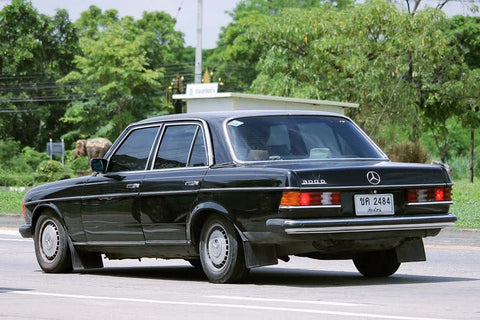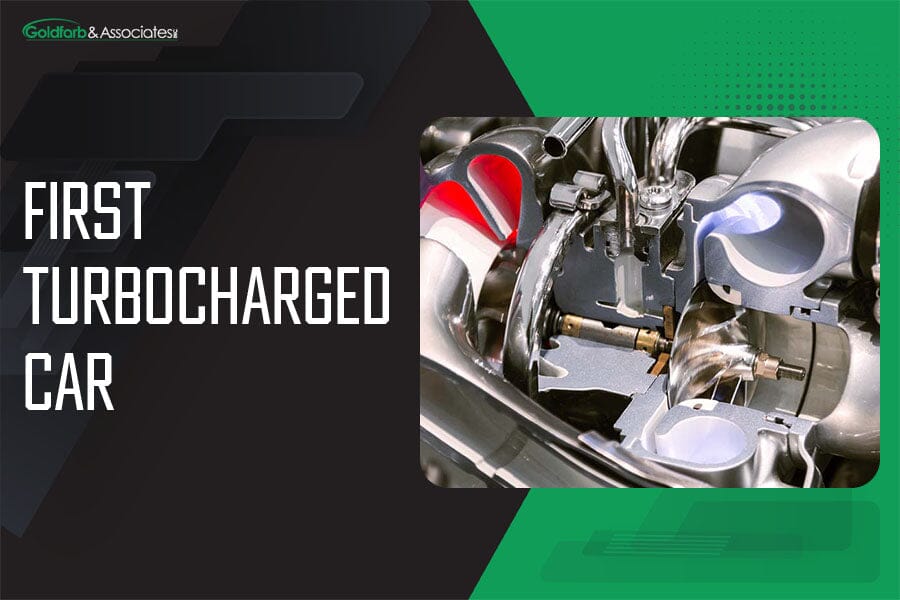In the dynamic and exhilarating world of auto parts, few innovations stir as much excitement as introducing the turbocharger. At the heart of this revolution lies the first turbocharged car, a marvel that redefined what vehicles could achieve in terms of power and efficiency.
This article will dive into the history of turbocharging and explore when this car was first developed and who stands behind its invention. It will track its history and discuss important milestones while offering a sneak peek of the future of turbocharging.

Source: shutterstock.com / Photo Contributor: Scharfsinn
First Turbocharged Car - Overview
The story of the first turbocharged car is not just about a single vehicle but about a pivotal moment in automotive history. Turbocharging marked a significant leap in automotive engineering. Those who are yet to be introduced to the concept of turbocharging should know that this is a process of using a turbine-driven forced induction device to increase an engine's efficiency and power output.
Browsing through the turbos for sale today, many people remain unaware that turbocharging was not initially developed for cars. Instead, it was first utilized in aircraft engines during World War I to enhance high-altitude performance. However, the transition from air to road vehicles was inevitable, driven by the relentless pursuit of efficiency and power.
When was the first turbocharged car made?
The first turbocharged car was made back in 1962, and here is the story behind it. As we mentioned previously, turbochargers were initially used only in aircraft. While they were an attractive option and would revolutionize automotive vehicles, the size of the turbochargers back then prevented companies from taking this step.
Other obstacles, such as earning ratio, also made it on the list of challenges that prevented automobile manufacturers from including a turbocharger in their vehicles.
When discussing when the first turbocharged model was designed, we must also praise its inventor. So, who made the first turbocharged car?
The first company to find a way to work around these challenges was General Motors. Their Oldsmobile Cutlass model - Oldsmobile Jetfire - was the first car ever to be produced with a turbocharger under its hood. Oldsmobile was working under the hat of General Motors, and the company produced the first turbocharged car in collaboration with the turbo-production company Garret.
A brief history of turbocharging
The first turbocharged tractors were made in 1938. Meaning turbocharged cars appeared almost three decades later, and the first model didn't do very well. Part of the reason why the first turbocharged automobile didn't do well was because of its high price, and the other reason was its initial unreliability. However, during the 70s, turbocharging became extremely popular in Formula racing cars.
As the awareness of turbochargers' benefits grew, so did their appeal. Simultaneously, during the 70s, an oil crisis hit, and turbochargers were a great way to achieve cleaner engines while also preserving power. This led to the creation of the first successful turbocharger passenger car installation, which happened in 1978.
Mercedes Benz 300DS hit the market and began an era where turbocharged cars were famed for their battery efficiency and low emission levels. The 300DS model featured the first-ever turbo diesel. This was a major event in the automotive industry as it quickly became apparent that turbo-diesel engines were more efficient than petrol-turbocharged engines.

Source: shutterstock.com / Photo Contributor: nitinut380
The invention of the double turbocharger
In the following years, attempts at innovation happened all across the automotive industry. The first to introduce a twin-turbocharged passenger car was the Maserati company. Their idea behind producing the Maserati Biturbo was to reduce the amount of turbo lag by having two turbos working parallel.
Though this idea might have seemed good on paper, it didn't prove efficient in practice. However, the twin turbocharger did help the car engine to produce immense amounts of horsepower.
A couple of years later, in 1986, Porsche set up twin turbos working in sequence in their 959 models and achieved the goal of Maserati. Though the twin-turbo setup was less reliable, it started to successfully lower the failure rate.
Turbocharging car milestones
In 1992, MHI successfully introduced the integrated bypass valve to the market. Two years later, the company designed turbochargers that could withstand higher temperatures. While the revolutionary twin-scroll turbine housing was introduced in 1997, this allowed the company to reduce turbo lag significantly.
Looking into the geometry of turbochargers, we will have to go back a decade. In 1988, the first variable-geometry turbo was introduced. The Honda company designed the VG turbo and came to the market with their Honda Legend model.
The beauty of the VG turbo was in its ability to lower turbo lag while also offering maximum power operation. However, progress was slow, and it would take the Honda company some extra years to issue a passenger VG car that would witness success. The turnaround came in 2001 when MHI released their VG turbochargers for passenger cars, which quickly spread to the European automobile market.
The future of turbocharged cars
Today's turbochargers are more complex and far more efficient than when the initial models debuted. Naturally, numerous advancements happened during the course of turbocharging history. This brings us to today's turbochargers that come in various forms, such as belt-assisted twinchargers, variable geometry turbos, etc.
Today, one of the most promising turbocharging technologies on our radar includes e-turbochargers. The theory behind these electrical turbochargers set out to achieve what none have done before - eliminate the effects of turbo lag.
The e-turbocharger design works by diverting part of the electrical energy into a capacitor that stores electrical energy. This energy is intended to power the compressor in cases when the turbocharger is not spooling properly. At the moment, this is just speaking in theory as we are yet to see one of these e-turbos go into production.

Source: shutterstock.com / Photo Contributor: supergenijalac
Conclusion
In conclusion, the first turbocharged car was not just a step forward in automotive technology but a leap into a new era. The pioneering vehicles we mentioned, such as the Oldsmobile Jetfire and Maserati Biturbo, opened possibilities that were once considered unattainable. As we reflect on the first turbocharged vehicles, we can see that the first engines to receive a turbocharger were tractor engines.
However, once turbos were introduced to passenger cars, innovation took its rapid course. Turbochargers found their place in racing cars, and soon, renowned automotive companies such as Mercedes and Porsche began perfecting the turbocharger installation. Not long after twin turbos hit the market, companies such as Honda began experimenting with the turbo’s geometry.
One discovery followed another, bringing us to today when we anticipate the future known as e-turbos.



